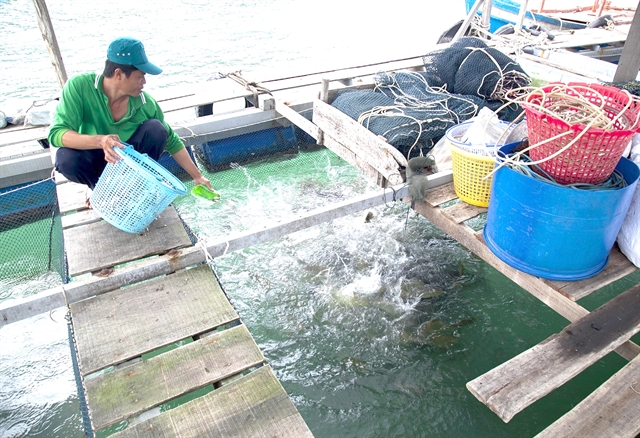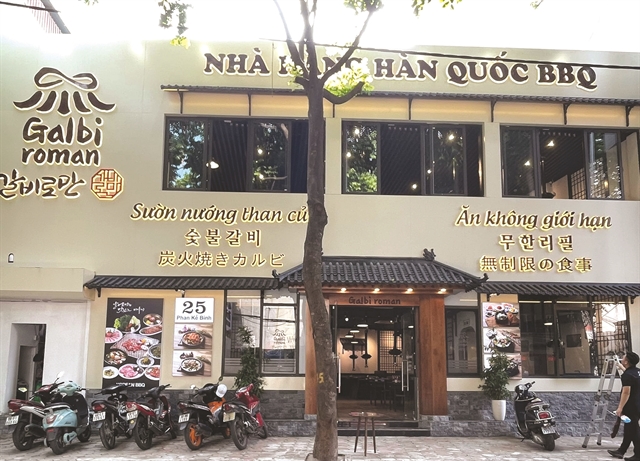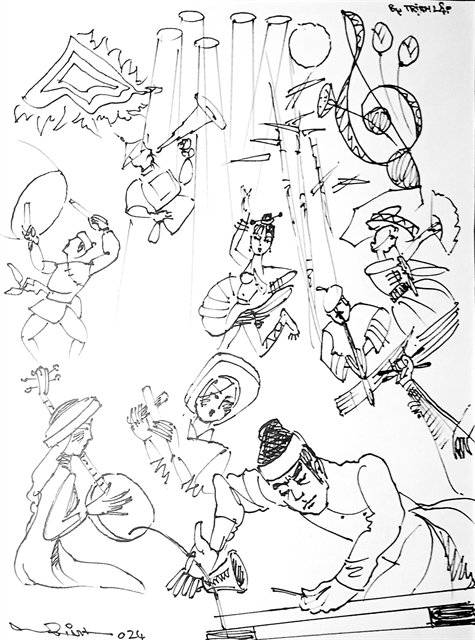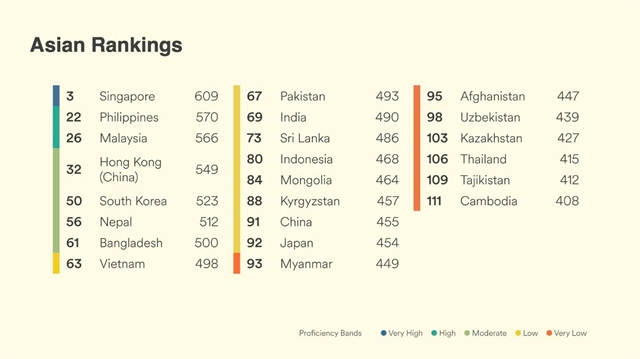 Environment
Environment

Upgrades to the Chợ Gạo canal, which connects the southeastern and southwestern regions of Việt Nam, have proven ineffective after just three years of operation, experts say.
 |
| The new embankment along Chợ Gạo canal was seriously eroded after fewer than three years in operation. — Photo tuoitre.vn |
TIỀN GIANG — Upgrades to the Chợ Gạo canal, which connects the southeastern and southwestern regions of Việt Nam, have proven ineffective after just three years of operation, experts say.
The upgrading project aims at dredging and expanding the canal to ease traffic congestion and to build embankments along the sides to prevent landslides. The economically critical Chợ Gạo Canal is the key waterway for transporting goods by ship from HCM City to the Mekong Delta and vice versa.
The first phase of the upgrade project was completed and put into operation in the 2013-14 period, at a cost of VNĐ786 billion (US$34.5 million).
Trần Đức Hải, deputy head of Vietnam Inland Waterways Administration, told Tuổi trẻ (Youth) news paper that the embankment of the canal has already been eroded.
He claimed this is because many vessels have been running too close to the embankment in the section of the canal that passes through the Mekong Delta Province of Tiền Giang. He also said a number of boats have been docking directly on the embankment.
According to Hải, the first phase of the project mainly focused on building the embankment and reinforcing the road, not on expanding the river bed, for an 11-km section of the Chợ Gạo canal. Because the canal is so narrow, vessels struggle to avoid passing close to the embankment.
The embankment should be maintained regularly while in operation, he said. But it hasn’t been reinforced since it was handed over to Tiền Giang province authorities.
Hải said that due to the limited budget, the upgraded canal will only facilitate ships of about 600 tonnes. Ships weighing over 1,000 tonnes must wait for high tide. Further upgrades to accommodate them would be costly and time-consuming, he said.
A captain named Chính said all barges with over 2,000 tonnes in weight had to wait for high tide to pass through.
Statistics from the Waterways Traffic Police Department of Tiền Giang Province showed that nearly 1,100 vessels pass along Chợ Gạo canal every day.
Due to shallow water, ships often get stuck for almost eight hours at a time.
Large-capacity ships must anchor at Tiền and Vàm Cỏ rivers while waiting for the tide to rise to pass along the canal.
“The fact that vessels had to wait between three and four hours a day to pass through the canal causes damage to enterprises,” said Trần Đỗ Liêm, chairman of Vietnam Inland Waterways Association, adding that the waiting time was the same as the length of a barge trip to transport goods from Mỹ Tho City to HCM City.
Constant traffic jams lower enterprises’ profit, he said.
He proposed dredging the canal to ensure smoother traffic flow.
Hải from Vietnam Inland Waterways Administration said the above-mentioned problem would be solved when the second phase of the project is completed. The second phase aims to dredge to widen the southern bank of Chợ Gạo canal to 55m.
At that time, big vessels could make use of high tide to operate normally, he said.
Costing VNĐ1.3 trillion (US$57 million), the project’s second phase will upgrade a 28.6-km section of the canal. It includes dredging the canal and building a stone embankment on the southern side of the canal and roads along its two banks.
It was supposed to be carried out in the 2016-2017 period under the build, operate and transfer (BOT) format, but it was suspended due to financial infeasibility under the BOT format. The Ministry of Transport has recently submitted a report to the Government proposing to use an Official Development Assistance loan for inland waterway corridor development projects, including the upgrades to the Chợ Gạo canal. Once complete, the upgrades are expected to ease traffic along the canal. — VNS









